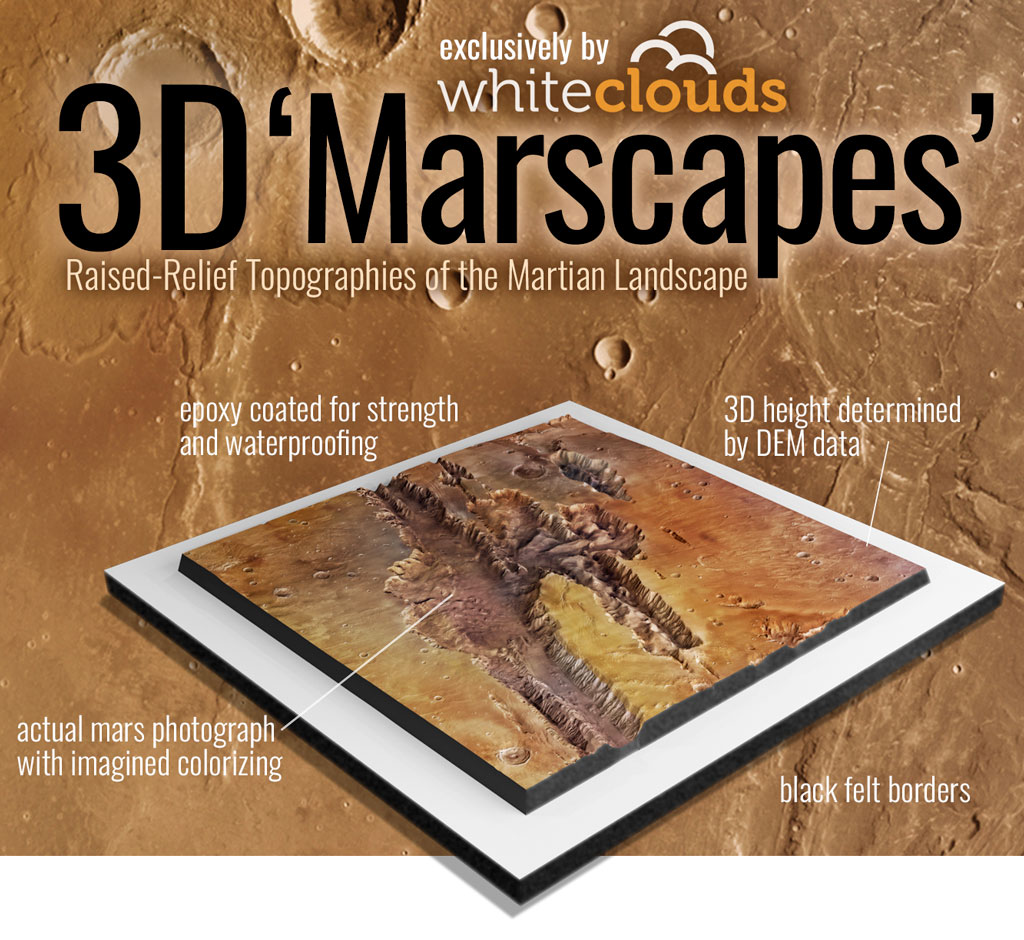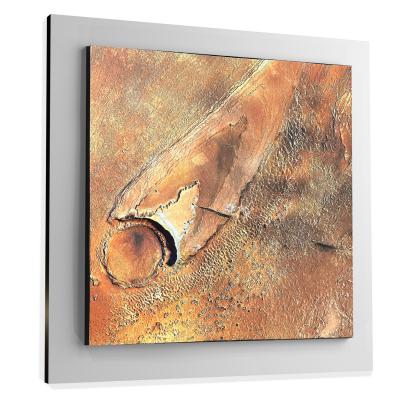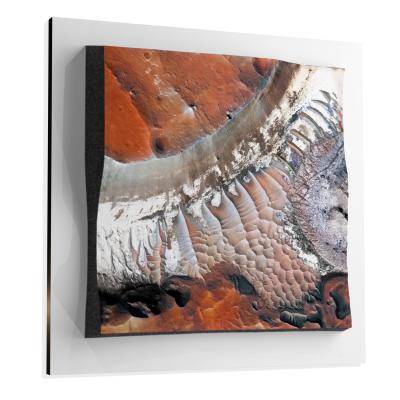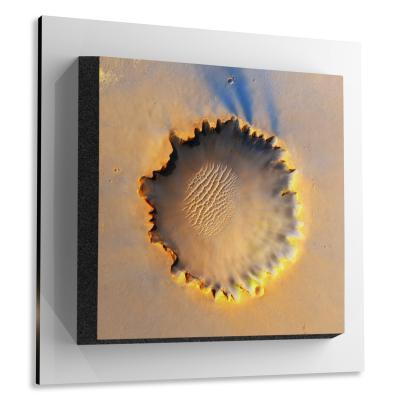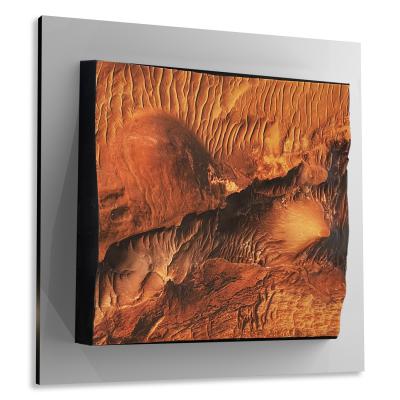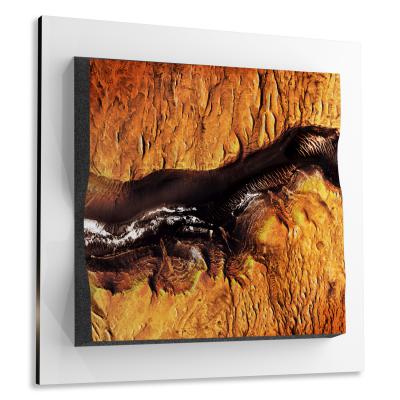Nili Fossae
Nili Fossae
We Build Custom 8K Mars Canvas Prints of Nili Fossae
Did you know we make
custom
8K Mars Canvas Prints

and
3D Marscapes

Nili Fossae
Nili Fossae stands as a geological marvel on the Martian landscape, captivating the scientific community with its intricate and multi-layered history. This unique formation has become a focal point for planetary geologists and astrobiologists alike, drawing them into a complex web of research that aims to unravel the mysteries not just of the feature itself, but of Mars as a whole. The area has garnered particular attention due to its rich geological tapestry, which holds the potential to provide invaluable insights into the planet’s evolutionary history, including various geological epochs and potential climatic changes.
Moreover, Nili Fossae isn’t just a scientific curiosity; it’s a window into the possibilities of ancient Martian life. The combination of its geological features and mineral deposits, particularly those that are often associated with the presence of water, make it a highly intriguing site for studying the conditions that could have once supported life.
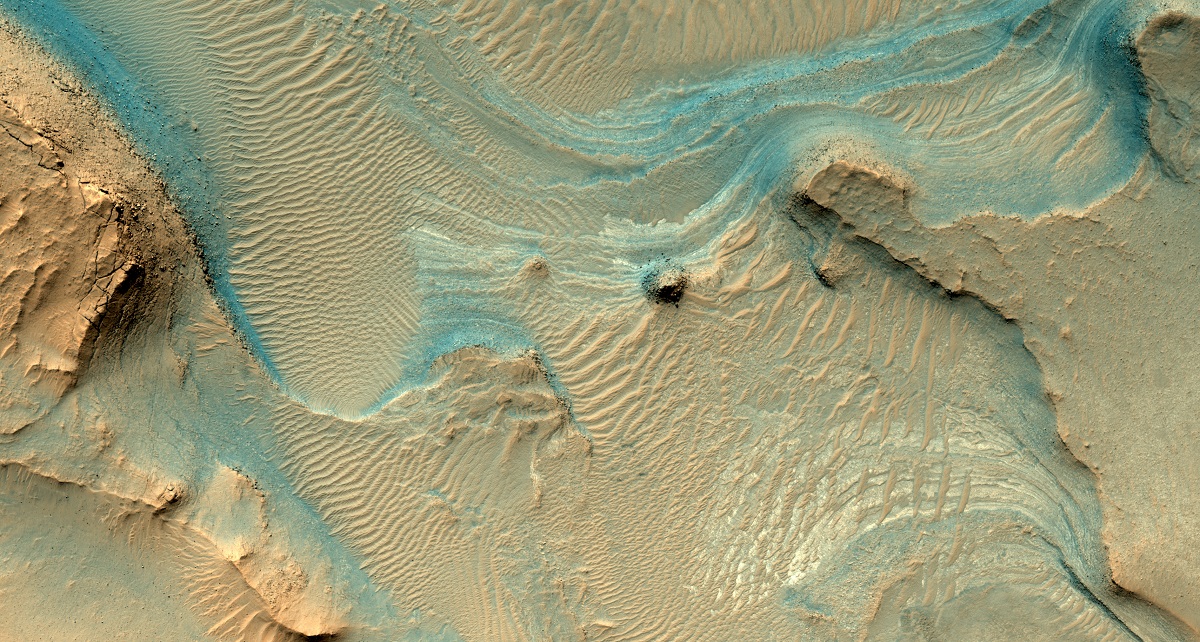 Nili Fossae-Layered Bedrock as Horizontal Striations
Nili Fossae-Layered Bedrock as Horizontal Striations
Geographical Location
Located on the surface of Mars in the Syrtis Major quadrangle, Nili Fossae is an extensive fracture system that spans an impressive 500 miles (approximately 800 kilometers) in length. This sprawling area is geographically positioned on the northern periphery of the ancient and expansive volcanic plain known as the Syrtis Major Planum. Its immediate neighbor is the colossal Isidis impact basin, which itself is among the largest impact basins on Mars. Geographically, the coordinates of this intriguing area range roughly from 70°E to 90°E in longitude and from 20°N to 30°N in latitude. Notably, the region serves as a juncture for several significant geological formations on Mars, each of which represents different eras and epochs in Martian history. In this sense, Nili Fossae is a kind of geological nexus or crossroads, providing an unparalleled opportunity for multidisciplinary research spanning geological, hydrological, and even astrobiological studies.
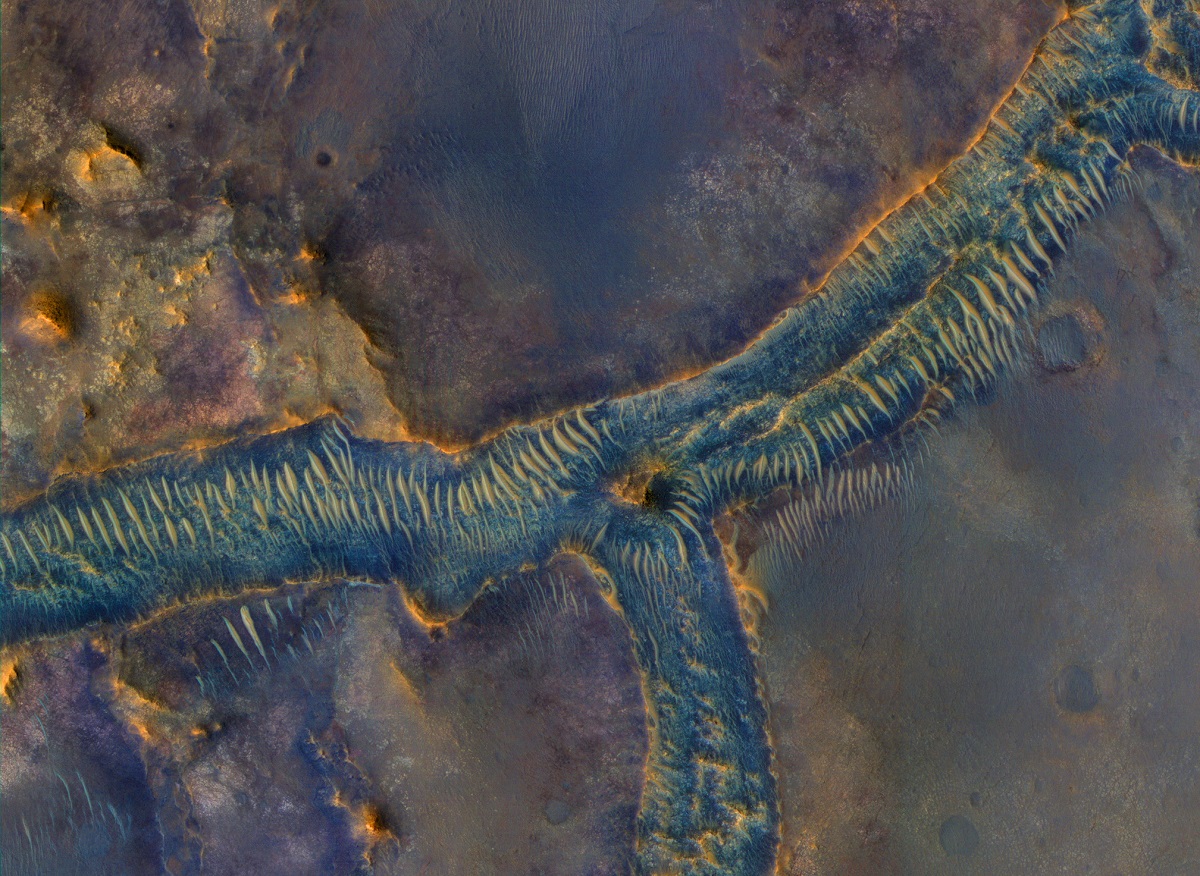 Troughs in the Nili Fossae Region
Troughs in the Nili Fossae Region
Advertisement
Sample Marscapes
Geological Composition
Nili Fossae is not just a geological curiosity; it’s a veritable treasure trove that offers deep insights into Mars’ convoluted geological history. The bedrock in this area is predominantly basaltic, a result of ancient lava flows from the Syrtis Major Planum. But what truly distinguishes Nili Fossae is its rich mineralogical diversity. Researchers have found an abundant presence of olivine and various types of phyllosilicates, including specific clays like nontronite. More remarkably, the area also showcases carbonate minerals, which are especially intriguing because they usually form in aqueous environments and have been associated with biological activity on Earth. The varied mineralogical signature hints at multiple aqueous environments that have existed over time. From acidic conditions favorable for the formation of sulfates to more neutral or alkaline environments conducive to the development of carbonates and clays, Nili Fossae encapsulates a spectrum of past environmental conditions. This complex geological makeup positions Nili Fossae as an enticing locale for the study of Mars’ past water activity, climatic conditions, and potential for life.
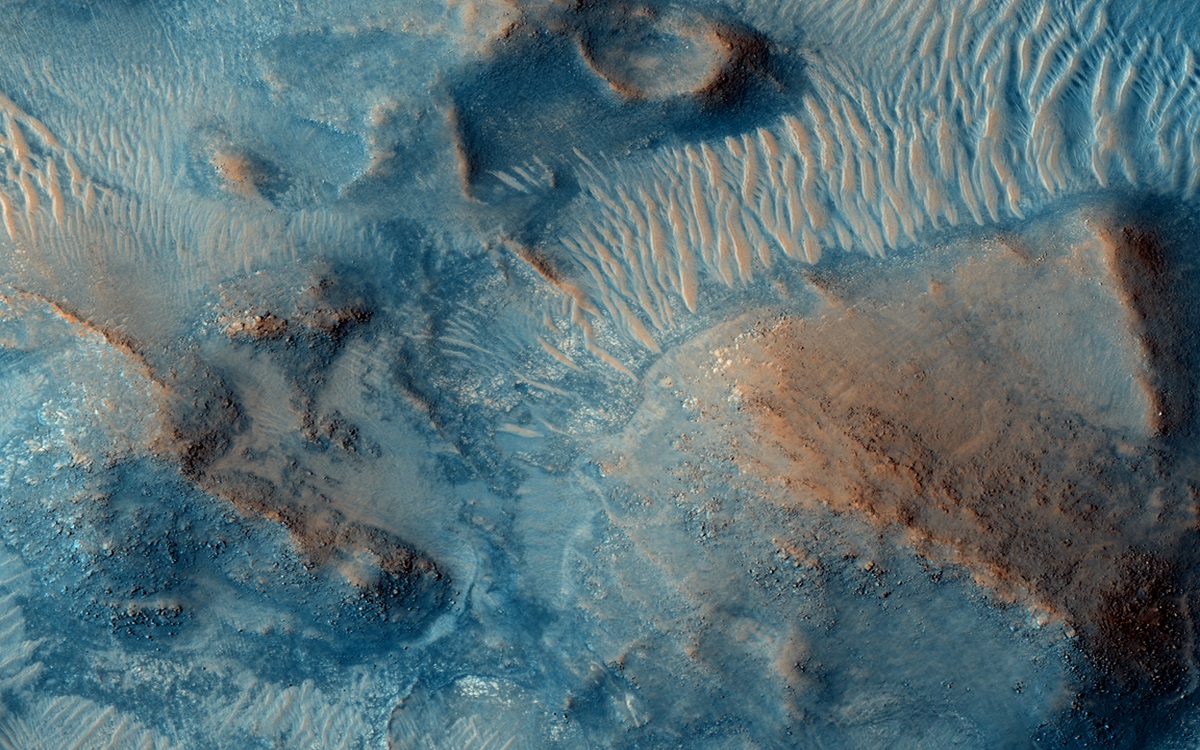 Clay Minerals in Nili Fossae
Clay Minerals in Nili Fossae
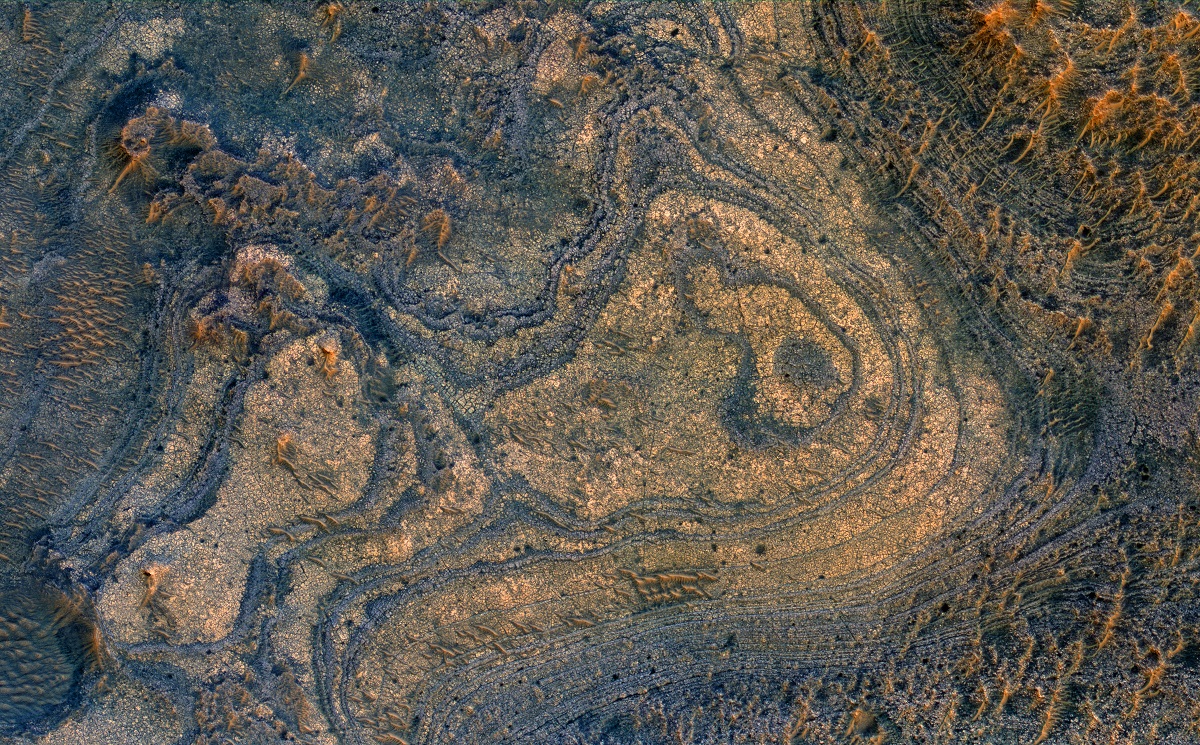 Layered Bedrock in the Nili Fossae Region
Layered Bedrock in the Nili Fossae Region
Significant Discoveries
Indicators of Ancient Water
Among the standout discoveries in Nili Fossae is compelling evidence for ancient water activity, possibly extending back billions of years. The detection of phyllosilicates and carbonates in the region strongly suggests that Nili Fossae may once have been part of an environment that was not just wet but potentially habitable as well.
Organic Compounds
Further adding to the allure of Nili Fossae was the groundbreaking discovery of organic compounds in the region. Although this does not serve as conclusive evidence for past life on Mars, the existence of these organic molecules significantly enriches our understanding of Mars as a planet that could potentially have supported microbial life at some point in its past.
Methane Emissions
One of the most tantalizing discoveries is that Nili Fossae has been pinpointed as one of the Martian regions where seasonal emissions of methane have been detected. This is electrifying because, on Earth, methane emissions are often linked to biological activity, although geological processes can also produce methane.
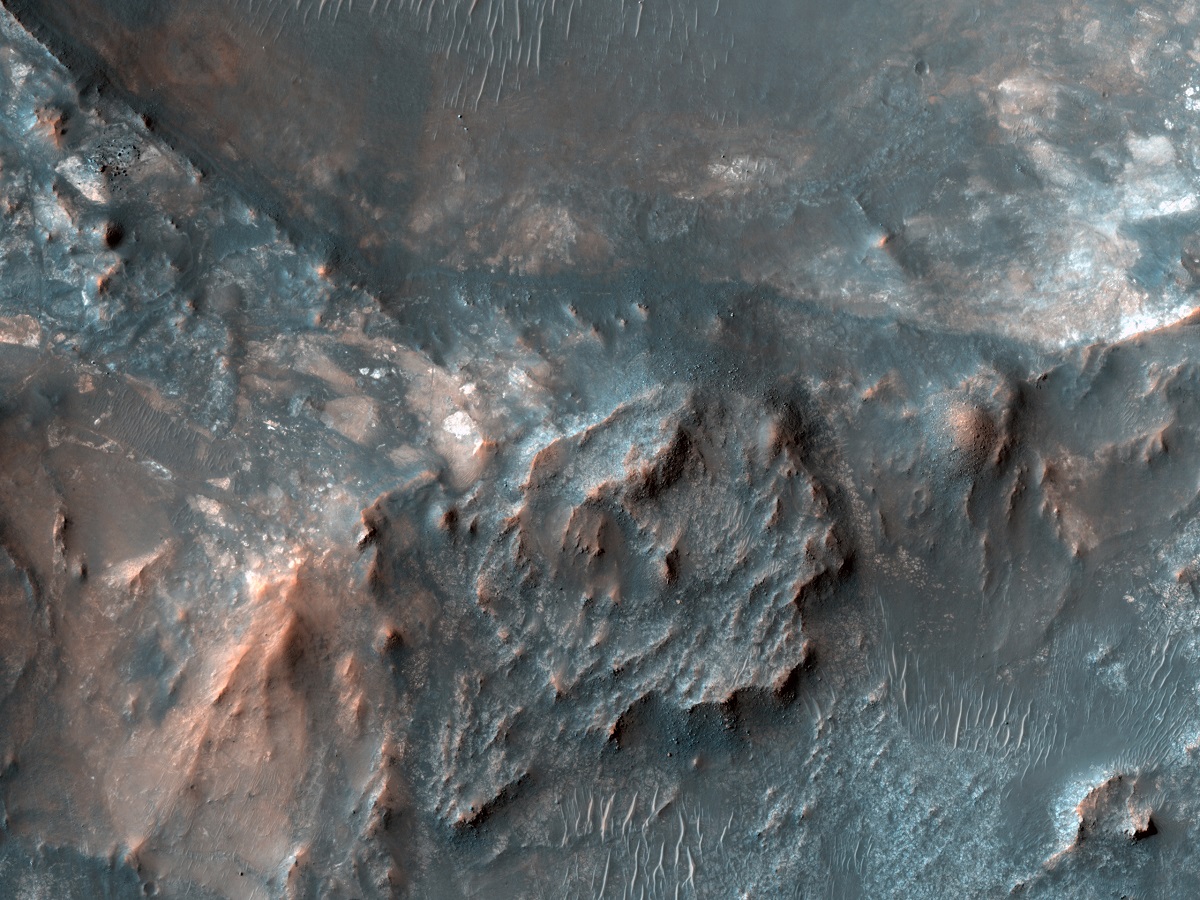 Reading the Rock Record at Nili Fossae
Reading the Rock Record at Nili Fossae
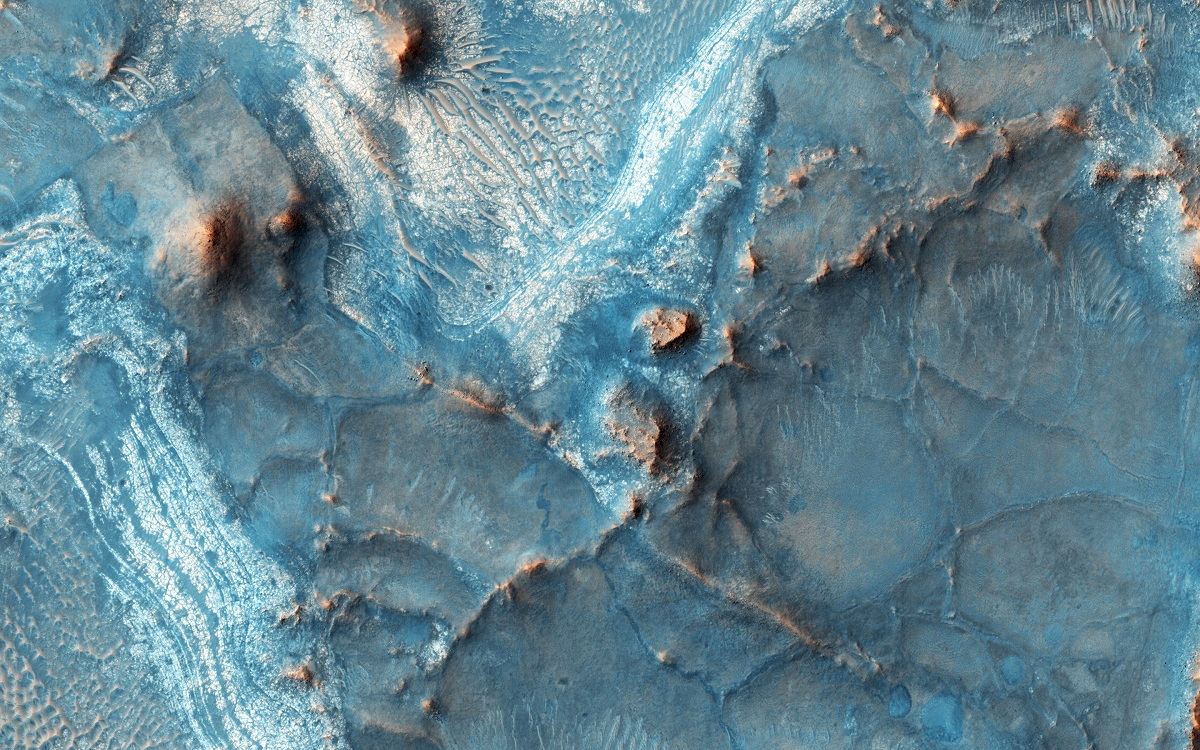 The Nili Fossae region
The Nili Fossae region
Scientific Missions
Mars Reconnaissance Orbiter (MRO)
The MRO has been indispensable in enriching our understanding of Nili Fossae. With its high-resolution imaging systems and sophisticated spectroscopic instruments, MRO has provided intricate details about the region’s geological and mineralogical makeup, as well as its intriguing topographical features.
Curiosity Rover
Though not stationed in Nili Fossae, data accumulated by NASA’s Curiosity Rover have been useful for comparative studies. This has helped to fortify our broader understanding of Martian geological and climatic history, providing a richer contextual background against which findings from Nili Fossae can be assessed.
Mars 2020/Perseverance Rover
The Perseverance Rover, specifically designed to hunt for signs of ancient Martian life, has earmarked Nili Fossae as a potential target for future explorations. The area’s rich geological and mineralogical diversity make it an ideal candidate for detailed astrobiological investigations.
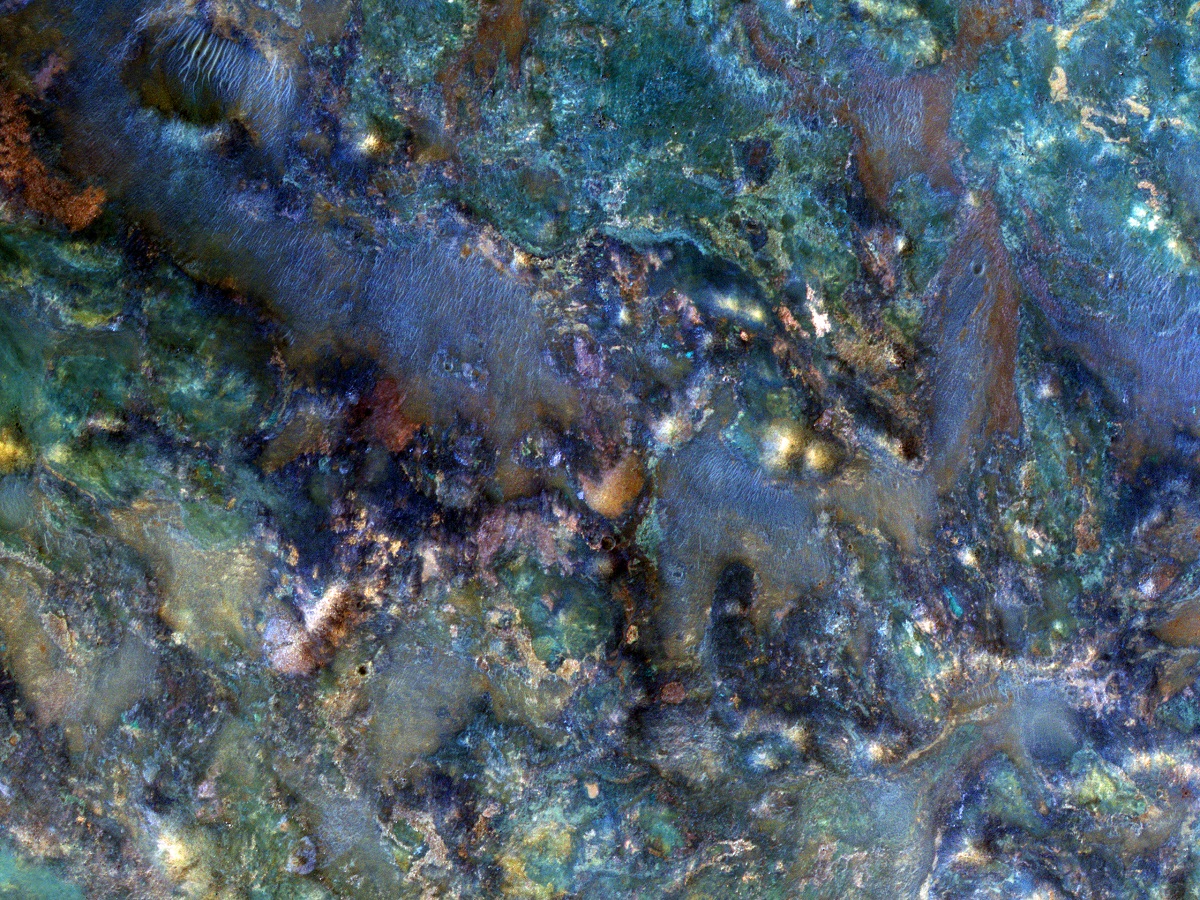 Region of Mars near Nili Fossae
Region of Mars near Nili Fossae
Geomorphological Features
The landscape of Nili Fossae is a dazzling compilation of geological artwork. Characterized by a complex system of fractures, troughs, and faults, it is one of the most geologically rich and diverse terrains on the Martian surface. These striking features are indicative of significant tectonic activity in the Martian past, possibly associated with the monumental forces that created the adjacent Isidis impact basin. The region is also speckled with a variety of impact craters of different ages and states of preservation, some of which expose deep layers of ancient Martian crust. Adding to this complexity is a network of channels and valleys that crisscross the landscape, strongly pointing to fluvial activity in a bygone era. This intricate assortment of geomorphological features not only adds aesthetic beauty to Nili Fossae but also makes it a focal point in the quest to understand Mars’ complex geological and hydrological history.
Nili Fossae stands as one of the most geologically intriguing and potentially significant regions on Mars. Its unique blend of mineralogical diversity, coupled with strong indicators of past water activity, makes it a high-priority candidate for future scientific missions. The region holds clues not only to Mars’ volcanic and tectonic history but also to the planet’s potential to have harbored life in the ancient past. As we continue to explore this complex Martian region, each discovery unravels a bit more of the enigmatic history of the Red Planet, inching us closer to answering some of the most profound questions about our planetary neighbor.
Check out our 3D Mars Learning Center for more information on Mars and Nili Fossae. You can also learn more at: NASA Mars Exploration.
More About Mars
Contact us today to learn more about our 3D services and how we can help you achieve your goals.
